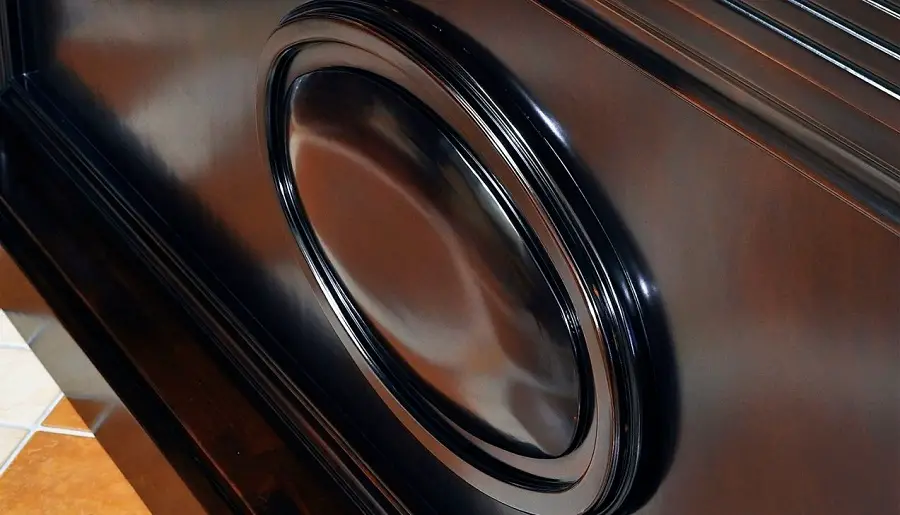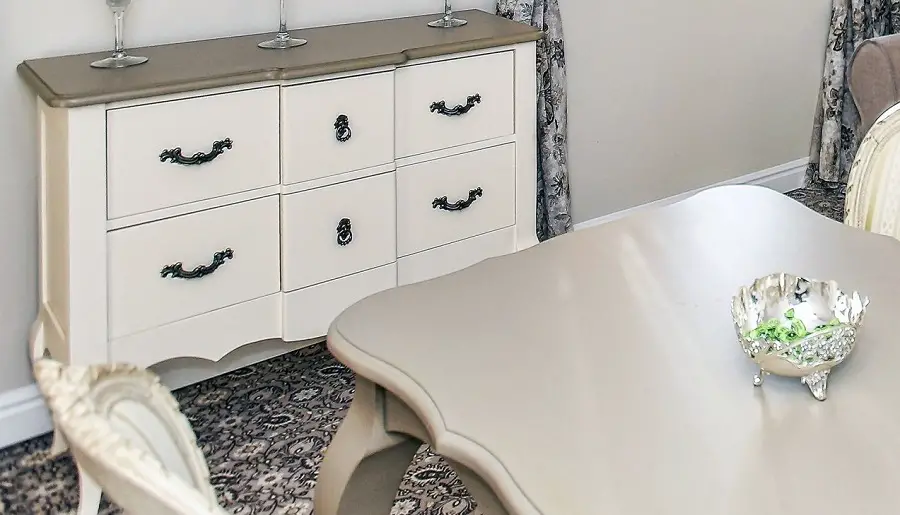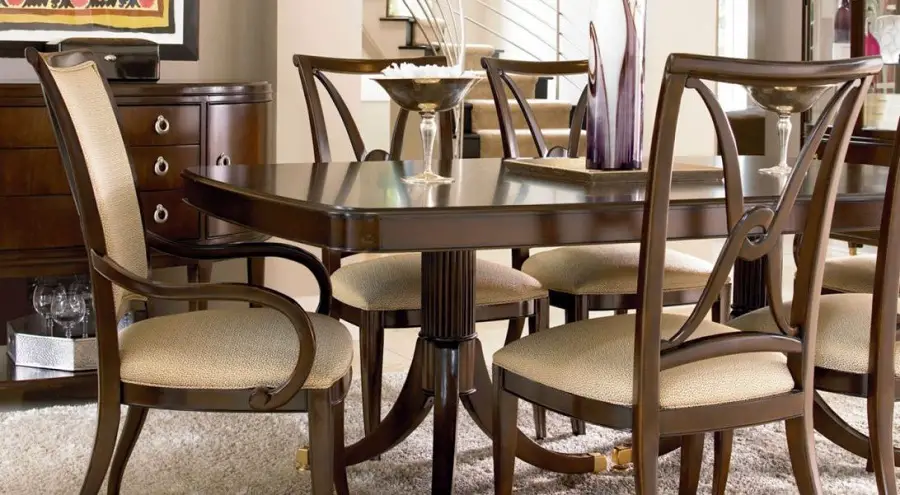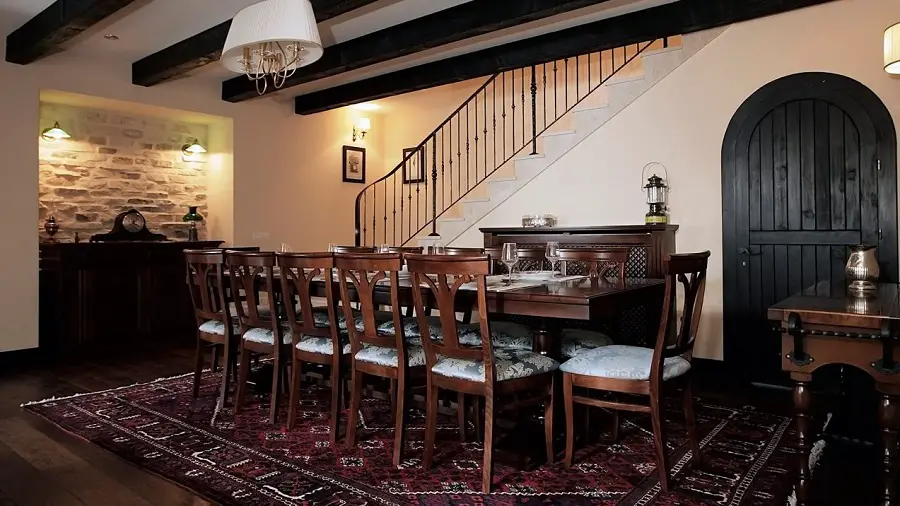We often see a decorative object, a picture frame or mirror or a piece of furniture and we find it hard to believe it's wood, the look is precious, delicate and elegant. The carefully crafted finish, the quality products used to protect it, the use of skates for special effects often make a simple, mundane wooden object a precious one. In the following I will tell you about finishing techniques for obtaining elegant-looking wooden objects, as well as which are the most suitable materials for a precious finish.
Wood preparation before application of materials
There are types of furniture - such as rustic or the antiqued - Where a scratch, a knock or a bevel in the wood is not so disturbing. Often such a defect even leads to the opposite effect, enhancing the authenticity of the object. On elegant-looking furniture or objects this is unacceptable. The preparation of wood for furniture of this kind is done with the utmost exigency. Polishing is done conscientiously, very carefully, using finer paper (200-220). Wet sanding is recommended to reveal any fine scratches that would only show after wet sanding.
Surfaces must be perfect, impeccable. If repairs have been made, they must be invisible. When the finish is transparent, the wood must be chosen with the greatest care so that its natural pattern blends perfectly and is continuous. Natural stains are rarely accepted. From the white furniture stage, everything must be as close to perfection as possible.

Wood staining and painting
Uniformity is one of the requirements and is unlikely to come out of applying a single coat of stain. Wood has its own way of absorbing colour and the difference in shades in the design influences this uniformity.
Usually a first coat of stain is applied, in a lighter colour than the one we want to achieve in the end. Then even out by making another pass over the initial coat. Standardisation can also be done after the primer has been applied, sometimes it is even better. Grundul better highlights differences in colouring, making the evenness more effective.
Uniformity is also achieved by using special, uniform colouring solutions. These stains are not very transparent and do not absorb deeply, precisely so as not to highlight the natural wood grain and its imperfections.
Often wood staining is chosen. In this case the natural wood stains do not bother. It is even a way to increase the value of wood with certain staining defects. By staining the wood grain is completely covered. But holes and scratches are not covered, so the surface must be perfect this time too.
To give a precious look you can use metallic paints. But be careful when choosing and combining them because such furniture should not be garish. Even if strong colours are chosen, they can be softened with the help of runners. Light-coloured, white or grey, but also classic walnut or dark walnut patinas can be used. They are used more to create shadows, to soften the vibrancy of colour because the preciousness is obtained from the metallic effect.

Grinding and lacquering
If transparent, such a finish should have depth, be rich and clear in transparency. At least 2 coats of primer are needed to avoid looking shabby, and that's only if a heavy-bodied primer is used. Usually 3 to 4 coats are applied, with sanding in between, to achieve a smooth, straight and pleasant to the touch surface. The primer should be of good quality, with very good transparency to give the feeling of depth.
Sanding between layers is very important because it ensures the smoothness and the pleasant finish. It is the operation that removes the high grain of the wood and any imperfections of the primer layers (orange peel, stings or fine scratches from sanding). Sanding before varnishing is done with sandpaper with a minimum grit of 320, the most suitable being 400. Elegant furniture is finished with a higher gloss varnish, 50-70 gloss. It is an elegant, non-aggressive gloss. Covered with such a varnish, small curls from sanding with unsuitable paper become very visible.
The lake for elegant furniture is located in the semi-glossy-glossy area. A gloss level The lower gloss, 20-35 gloss, places the mop in the area of the usual one, and the high gloss, 90-100 gloss, makes it too aggressive, "spoils" its elegance. The lack of gloss, so appreciated in natural-looking furniture, is not a good choice in this case.
The varnish should be nice and silky. Sometimes a layer of wax is applied over the varnish and polished to improve the tint. Wax contributes to both the tint and the shine.

Skating, special effects
Elegant furnishings and decorative objects often have discreetly applied patinas that give them depth or discreet metallic sheens. They are applied over primer to control the amount and remove excess.
Dark coloured patinas - walnut or black - are used to mark profiles or carvings and give them depth. Gold, silver or bronze give that precious look. If you want an object to be entirely in a metallic colour use metallic paints, not patinas. Patinas are for highlights and accents, to highlight something. It's the jewelry on a woman's hand or the earring in her ear. It's not about quantity, it's about quality.

Elegant classic furniture is well suited to spacious, tall homes. The materials and decorations that go with it should be of the same quality. Drapes, curtains, decorative cushions and carpets should also be high. Classically elegant furniture is also used to create a pleasant, welcoming atmosphere in luxury hotels and guesthouses or elegant restaurants. It's really what sets the style of the place.




























Hello,
Please help me with some advice.
I have a solid oak oval CHATEAUX DINING ROOM series table, purchased 20 years ago from ALPROM Pitesti.
http://www.alprom-sa.ro/download/catalog_2015.pdf
It's a great object, but the tabletop has aged from so much use.
It has become glossy transparent and is no longer temperature and colour/liquid resistant.
I have no scratches, staining or other defects, except that the lacquer has deteriorated over time.
Please recommend me procedures and/or products with which I can recondition it in order to preserve the original image.
Thank you very much for your help,
Liliana Cotet
tel 0740670711
Please recommend a method of reconditioning.
Good evening!
From what you're telling me I don't understand how the lake turned. Has it lost its transparency and gloss? Plus I find it very strange that until now it was temperature resistant and now it is not. Because if it had a high resistance it means that the top varnish was resistant (hardening varnish - polyurethane, polyester, etc). Or such a varnish does not disappear over time due to wear. But if it was an ordinary nitrocellulose varnish, it could lose its properties over time but would have had low temperature resistance and patina before.
By going for the first option - hard varnish that has lost its properties over time - you can restore its shine by polishing. You should call in someone with an exterior. It can be done with a circular motion (orbital) polishing machine, polishing solution, and talk about orbital paste.
If the lake was weaker then you need to clean the surface thoroughly with water and detergent. Wipe it off and let it rinse. Then apply wax to the entire surface, leave for 1-2 hours, then polish with a clean cotton cloth. You will get a very beautiful surface with a silky sheen. The surface will not be resistant to hot objects or hot coffee or alcohol patches.
If the surface has fine scratches and the varnish layer is thick enough, they can be removed by sanding with a 240 or 280 grit sandpaper, after which the surface is polished.
All the best!
Good evening,
I am building a beech wood table (continuous lamella) for the kitchen, with what primer and varnish to protect it, highlight?
Good evening.
To highlight the wood design you should first stain the wood. Beech is a rather unpleasant wood, it stains easily. You should use a solvent-based wood stain or apply a thinner coat of stain primer first. This way you will get an even stain.
Very nice looks if you finish with oil and wax but the resistance is very low. For a good resistance use polyurethane varnishes or any varnish with hardener. The surface will be resistant to scratches, water, coffee or other hot liquids, alcohol.
It is up to you how you want your meal. An oil and wax finish is rustic, natural. One with lacquer has a protective film and can have different degrees of gloss, as well as good resistance. But we must not forget that in the past, tables were only glazed and were used for decades. They acquired a patina of the time that is now highly appreciated and we strive to achieve it with different materials. Again, it depends very much on what type of table you make.
Good luck!
Don't forget to subscribe to the printed Wood Magazine! For only 58 lei/year you can find out news in the field, discover craft ideas or trade secrets. We remind you that the content in the printed magazine is different from the one on the website. Details in the link below.
Thank you!https://revistadinlemn.ro/product/abonament-revista-din-lemn/